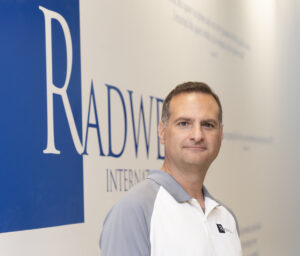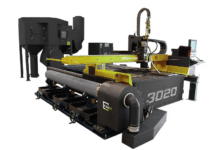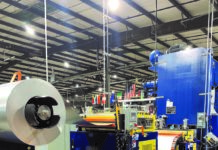
Could you give us an overview of the company’s history, and who was involved?
I’d be glad to. Jerry Radwell and Jim Speck founded Speck Industrial Controls in 1979. Later Jim left Speck and Jerry Radwell took over ownership, but health issues forced his son, Brian – the current president and CEO of Radwell International – to step up at a very young age to keep the company alive. This dedication paid off when he realized that there was a niche to be filled in terms of providing surplus parts and equipment to industrial buyers, who had nowhere to turn but eBay at the time. This epiphany led to explosive growth and allowed the company to move from approximately 7,000 square feet of space into a new 110,000 square-foot facility in 2005. That really marks the beginning of the Radwell’s upward trajectory toward becoming the global entity it is today.
Can you give us some idea of how the company is structured?
You can break it down into four areas. The first is Industrial Electronic Repair for manufacturing and automated components, and the second is Certified Pre-Owned, or Surplus Parts and equipment. The third is New Equipment Sales from companies such as Baldor/ABB, Danaher Controls, Siemens, and SICK, among many others, and the fourth is Asset Recovery. This allows us to step in and assist manufacturers with surplus equipment they’re interested in selling. Scenarios run the gamut from a company with a warehouse full of obsolete equipment they’d like to clear out, to a storage room filled with new automation and industrial electronic parts they no longer have any use for, to entire operations that are closing up shop and need to liquidate their automation assets. We will take inventory of these materials, make a bid, and then channel the results into the appropriate Radwell division, whether that be New or Surplus Parts.
 How do you service your customers, and what is your geographic footprint?
How do you service your customers, and what is your geographic footprint?
We have a mix of inside and outside sales representatives, a customer relations team, and a purchasing department that work in tandem to achieve our motto: “One Radwell working together toward a common goal.” This means that, in addition to an employee’s primary function, they are also trained to seek out additional opportunities that might benefit the customer. If they’re picking up a piece of equipment for repair, they might ask if the manufacturer has any new, old, or outdated automation items they’d like to get rid of in order to reclaim wasted space. Then they would share this information with our purchasing department, who would contact the company to discuss making a bid on the excess equipment. So it’s an intricate network that we’ve developed over the years, and a very successful one. I can attest to that myself by pointing out that there were about 50 Radwell employees when I joined the company in 1999, and there are now approximately 1,000 at nine locations around the world in the U.S., the U.K., Canada, and Germany.
When it comes to surplus/reconditioned equipment, I’m assuming that pretty significant savings can be realized.
That’s true, generally along the lines of 60-70 percent over new, in fact. As an example, there was an automotive manufacturer who visited our booth at a tradeshow who had a Mitsubishi Drive that really did a great job for him, but it was somewhat dated and finding parts and repair services was getting increasingly expensive and time-consuming. While he was standing there we were able to determine that we had exactly what he needed in more than one location, and at a price so low that it literally left him speechless. Plus, we could handle repairs from that point forward, while also providing a two-year warranty, as we do on all our repair work and surplus equipment. In addition, we test the equipment we repair – not just components, but the entire system – on stands that our engineers design prior to their return to service. And that’s central to our business model: you can come to Radwell, buy new equipment, save money on surplus items, get your old stuff repaired, and even sell off plant floor equipment you no longer need, all in one place. That’s a huge convenience you’re really not going to find anywhere else.




















